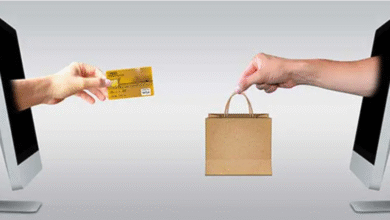Copy of How to Build a Proactive Business Debt Recovery Plan for Long-Term Financial Stability

Every business, whether it’s a healthcare provider, utility company, or debt buyer, faces the harsh reality of overdue payments. Delays in payments or defaults can negatively affect cash flow and hinder long-term growth. As a credit grantor or receivables originator, dealing with business debt recovery can feel overwhelming, especially when it impacts financial stability.
However, having a structured and proactive debt recovery plan in place can significantly reduce these risks, ensuring you can collect outstanding debts efficiently while maintaining strong relationships with your clients.
In this blog, we’ll guide you in creating a business debt recovery plan tailored to your needs, from setting goals to applying key strategies. Learn how to regain control of receivables and secure your company’s financial future.
Understand the Importance of Proactive Business Debt Recovery
The key to successful business debt recovery lies in being proactive rather than reactive. Waiting for overdue invoices to pile up before taking action can lead to additional challenges, including deteriorating cash flow, strained relationships, and reduced revenue. Taking a forward-thinking approach to debt recovery allows you to address issues before they become significant problems.
By having a well-structured plan in place, businesses can recover debt more quickly and prevent unnecessary financial strain. A proactive strategy also helps build trust with your clients, as it signals your commitment to managing finances effectively and with clarity.
Step 1: Set Clear Debt Recovery Goals
Before diving into recovery strategies, it’s essential to set clear and achievable goals for your business debt recovery process. These goals will serve as the foundation for your plan and guide your actions moving forward.
Establish Key Objectives:
- Define the amount of debt you aim to recover each month or quarter.
- Set a timeline for collecting debts, taking into account the type of business and the nature of client relationships.
- Identify which debts are most critical to recover first (e.g., high-value accounts or longstanding debts).
These goals will help you stay focused and measure your success over time, ensuring that your efforts align with the long-term financial stability of your business.
Step 2: Categorize Your Outstanding Debts
Not all outstanding debts are equal. Some may be from clients who have always been reliable, while others may come from accounts that have been problematic. Classifying debts based on risk and urgency allows you to prioritize collections effectively.
Debt Categories:
- Current debts: Payments that are just overdue.
- Delinquent debts: Accounts overdue for more extended periods (30-60 days).
- Chronic debts: Accounts with histories of late payments or defaults.
By segmenting your debts, you can develop tailored approaches to each category. For example, you might offer flexible payment plans for reliable clients with overdue payments, while pursuing legal action for chronic defaulters.
Step 3: Establish Clear Communication Channels
Open and transparent communication is a cornerstone of successful business debt recovery. You need to engage with your customers early in the process to remind them of overdue payments and offer solutions to address them.
How to Communicate Effectively:
- Send reminders: Initiate contact through emails or calls when payments are slightly overdue.
- Offer payment options: Flexible payment plans can often ease financial burdens and prevent further delinquencies.
- Document communication: Always keep records of your correspondence with clients to protect your business.
Creating an open line for communication allows clients to reach out and discuss their payment issues before the situation worsens.
Step 4: Create an Internal Debt Recovery Process
Having a well-defined business debt recovery process is crucial for maintaining consistency and efficiency. This process should outline clear steps for each stage of debt collection.
Debt Recovery Process:
- Initial Reminder: Send a gentle reminder when the payment is overdue.
- Follow-Up Communication: A second reminder is sent if payment is not received within the specified timeframe.
- Payment Plan Offer: If the client is struggling, consider offering a plan to ease their financial burden.
- Debt Collection Agency: If the debt remains unpaid, consider working with a debt recovery agency or taking legal action to resolve the issue.
Ensure everyone involved in the recovery process is on the same page and follows these steps consistently. Having a clear, systematic approach allows you to manage collections efficiently and prevents any crucial steps from being overlooked.
Step 5: Leverage Technology for Efficient Debt Recovery
Technology can be a powerful ally in the business debt recovery process. From automated reminders to software that tracks payment history, using the right tools can help streamline your efforts and improve recovery rates.
Tools to Consider:
- Debt Recovery Software: This can automate reminder emails, track outstanding debts, and generate reports to monitor progress.
- CRM Systems: Integrate a customer relationship management (CRM) system to ensure consistent follow-ups and smooth communication.
- Payment Gateways: Provide online payment options that facilitate prompt bill payments for customers.
Utilizing technology minimizes manual errors and accelerates the debt recovery process, enabling your business to recover funds more efficiently.
Step 6: Work with Professional Debt Recovery Agencies
When all in-house efforts fail, it may be time to partner with a professional debt recovery agency. These agencies specialize in business debt recovery, using industry knowledge and expertise to recover outstanding payments while minimizing the impact on your client relationships.
When choosing an agency, consider the following:
- Experience: Choose an agency with expertise in your specific industry.
- Success Rate: Review their track record of successful recoveries.
- Approach: Ensure their methods align with your business’s values and customer service standards.
By working with a professional, you can focus on other aspects of your business while they handle the collection process.
Step 7: Use Legal Action as a Last Resort
As a last resort, if efforts to recover debts through communication and agencies fail, legal action may become necessary. This is typically used for larger, long-standing debts that haven’t been settled despite repeated attempts.
Legal Options:
- Small Claims Court: For debts under a certain amount, you can take legal action through small claims court.
- Civil Lawsuit: For larger amounts, pursuing a lawsuit may be the next step.
- Judgment Collection: Once a judgment is entered, the debtor’s wages or assets may be garnished to recover the debt.
Legal action should be a last resort due to the time, cost, and effort involved. It’s critical to weigh the potential outcomes before moving forward.
Step 8: Maintain Customer Relationships Throughout the Recovery Process
Even during the business debt recovery process, it’s essential to maintain a positive relationship with your clients. Clients who feel respected and valued are more likely to return for future business.
Tips for Maintaining Relationships:
- Be empathetic: Understand that financial difficulties can arise and demonstrate a willingness to work with clients.
- Avoid aggressive tactics: Refrain from using hostile methods that could damage your brand reputation.
- Be transparent: Clearly explain the consequences of non-payment and offer solutions that benefit both parties.
By being understanding and patient, you foster goodwill that can lead to long-term, profitable relationships.
Read Also: Ztec100.Com: a Deep Dive Into Tech, Health, and Insurance
Conclusion
Incorporating a proactive and structured business debt recovery strategy can improve your collection rates and secure your company’s financial future. By setting clear goals, prioritizing debts, utilizing technology, and engaging with professional agencies, your business can recover payments more efficiently and ensure long-term stability.
Remember, the key is consistency and clear communication. When you build a solid plan and follow through on it, you’re not only securing immediate cash flow but also reinforcing your reputation as a responsible and reliable business in the eyes of your clients.




